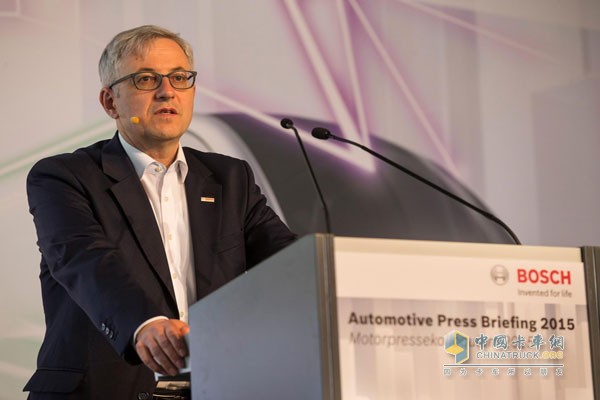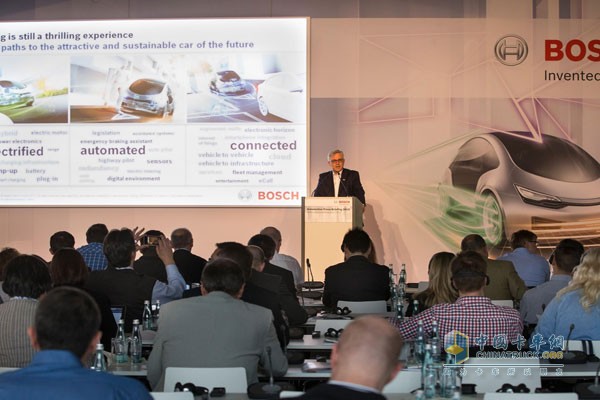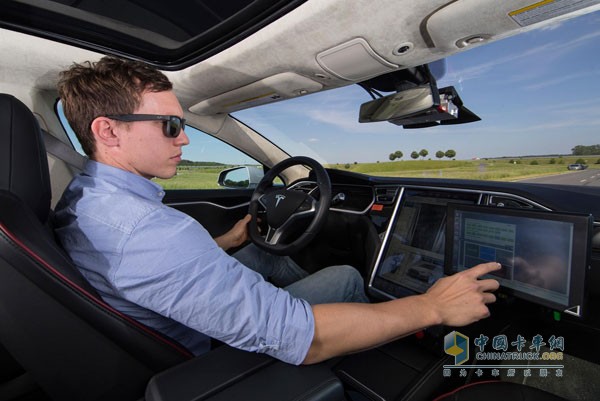As the largest business unit of the Bosch Group, the automotive and intelligent traffic technology business maintains a strong growth momentum. Taking into account the impact of exchange rate fluctuations, the actual sales of the business unit in the first quarter of 2015 increased by 7%, while the nominal sales growth amounted to 13%.1 From May 19 to May 21, 2015, Bosch Dr. Rolf Bulander, Chairman of the Automotive and Intelligent Transportation Technology Business Unit, stated at the Bosch International Automotive Media Exchange in Burgsberg, Germany: “We have achieved outstanding results both in technological innovation and global sales. In 2015, we will We achieved sales growth that exceeded the market average again.†In 2014, Bosch Automotive and Intelligent Transportation Technology achieved 8.9% sales growth, which is twice the growth rate of global vehicle production. The sales growth rate of a series of core products, including the electronic stability program ESP, diesel fuel system, and direct injection of gasoline and diesel, reached approximately 20%. In the future, Bosch will also provide more integrated solutions for cars and other modes of transportation. “We are rethinking traffic and moving forward with the concept of multiple modes of travel that encompasses diverse modes of transportation such as bicycles, trains and buses,†explains Bulander, “Our focus has exceeded Car technology and investing in the entire intelligent transportation field."

Dr. Rolf Bulander, Chairman, Bosch Automotive and Intelligent Transportation Technology Business Unit
Electrification technology makes diesel and petrol cars more energy efficient
On the road to future travel, Bosch’s success is both technical and commercial. The company is seeking three development paths: The goal is to make the future more electrifying, automated and interconnected. "Bosch has made good progress in these three areas," said Bulander. In his view, although electric mobility will eventually come, but within 10 years, the traditional internal combustion engine will still be the basis for efficient travel. In the next five years, through the Bosch high-efficiency internal combustion engine technology, the fuel consumption of diesel engines is expected to drop by 10%, while the gasoline engine has nearly 20% of the optimization potential.

The 62nd International Automobile Media Exchange Conference
Combined with electrification technology, internal combustion engines will become more energy-efficient. By 2025, 15% of the world's new cars will be equipped with at least one hybrid system. With Bosch's exquisite technology and know-how, the hybrid system can be perfectly fitted to the vehicle. Of the 30 powertrain electrification orders that Bosch has successfully delivered, 10 are plug-in hybrid systems for high-end vehicles. These vehicles are driven by gasoline or diesel during long-distance driving and switch to electric-only mode when driving on urban roads. "We are very experienced and can make hybrid systems successful," said Bulander. "In the past, we have made the diesel common rail system a legend. In the future, we will also succeed in electrification."
Automatic driving can reduce accident rates by up to one-third
As the automotive industry moves toward autonomous driving, the market for driver assistance systems is booming. In this market, Bosch’s sales of driver assistance systems are growing at a rate of one-third per year. Last year, Bosch's total sales of environmental sensors for driver assistance systems exceeded 50 million units for the first time. In 2015, sales growth of Bosch radar sensors and video sensors is expected to double as in 2014. Bosch is a global market leader in radar sensors that can be used in systems such as adaptive cruise control. In addition, the driver assistance system will play a role in traffic congestion, emergency evacuation of vehicles, and remote parking, thereby greatly facilitating the driver. By 2020, our goal is to produce a pilot system on the freeway to achieve automatic driving on the freeway. Dirk Hoheisel, member of the Board of Directors of the Bosch Group, considers this to be a decisive step in the development: “With this system, we can turn from partial automatic driving to highly automated driving. At that time, the driver will become a passenger completely. This means that travel will change. It is more comfortable and safer.†Bosch traffic accident researchers expect that evolving automotive automation technology can significantly reduce accidents and reduce the accident rate in Germany by up to one-third.

Bosch Highly Autopilot Technology Demonstrates Physical Presentation on Tesla Model S
At Bosch, about 2,000 engineers are committed to the development and improvement of advanced driver assistance systems, an increase of 700 from two years ago. After completing the acquisition of the ZF steering system (now the Bosch Automotive Steering Division), Bosch has further strengthened its capabilities in the field of automated driving. "In this way, Bosch technology not only enables automatic acceleration and braking of future vehicles, but also allows them to automatically steer," says Bulander.
Connected Driving: Becoming Bosch's Flourishing Service Business
The Internet will play a key role in the development of the automobile in the future. Even now, the Internet is already providing real-time traffic news, traffic accidents, and predictions of construction areas, or it reminds you of traffic jams that will occur at the next turn. Drivers can also find and book idle charging piles via the Internet and even complete online payment at the same time. "Interconnection is the key to the success of electrification and automation," said Dr. Markus Heyn, member of the board of directors of the Bosch Group. In addition, the interconnection technology also brings a new service model. For example, based on the data transmitted by the on-board electronic control unit (ECU), people can perform preventive vehicle maintenance and receive fuel-saving advice. Such connected driving services also help car rental companies and insurance companies to manage their fleets. Drivers can also use these services directly through the Bosch “Driving Log†Drivelog online platform. To do this, they only need a smartphone and a connector to read ECU data. By the end of this year, it is estimated that about 200,000 cars will be equipped with such Bosch Internet technology and enjoy a new kind of interconnection service. "Our interconnection technology has already completed the trial phase of the project. For Bosch, it is becoming a booming service business." Bulander said.
Bosch is also committed to bringing together all types of traffic and applying Bosch's intelligent traffic technology. “The new products we provide will no longer be limited to cars. For example, we are entering services such as urban transportation services,†explains Bulander. One example is Bosch's application software developed for the Stuttgart Services Project. With this software, you can use a single chip card to rent and share cars and bicycles. You can also use trains and buses, as well as access to facilities such as swimming pools or libraries. “These are just glimpses of the future of transportation services.†Bulander added.
In addition, Bosch has also developed prototypes that can link cars and smart homes: For example, before your car enters the home, the navigation system can automatically issue commands to the central heating system to make your home Warm up at the right time. “Whether it is for your home or your car, the technology created by Bosch is always a promise of 'technology to achieve the beauty of life'â€, says Bulander.
Buy truck parts, on the Taobao stalls, multiple discounts waiting for you to take!
Http://Drain.html
Tubal Johnson Screen, also called stainless steel sieve pipe or filter pipe, is widely used in sand control industry of oil, gas and well, especially in well industry. The special wedge shaped wires are welded on a group of supporting rods arranged in a circular pattern.

The continuous winding of wedge shaped wire on the supporting rod forms continuous high density uniform slot opening. Wedge shaped stainless wires and support rods are connected together by welding, thus, the structure is strong and durable.
Outer diameter from 25 mm to 800 mm
Material: 304, 321, 316 L, 904 L, duplex steel 2205, duplex steel 2207, Monel .etc.
Tubal Johnson Screen
Johnson Well Screen,Tubal Johnson Screen,Stainless Steel Tubal Johnson Screen,Tubal Wedge Wire Johnson Screen
Xinxiang Shengda Filtration Technique Co., Ltd. , https://www.filtrations.nl